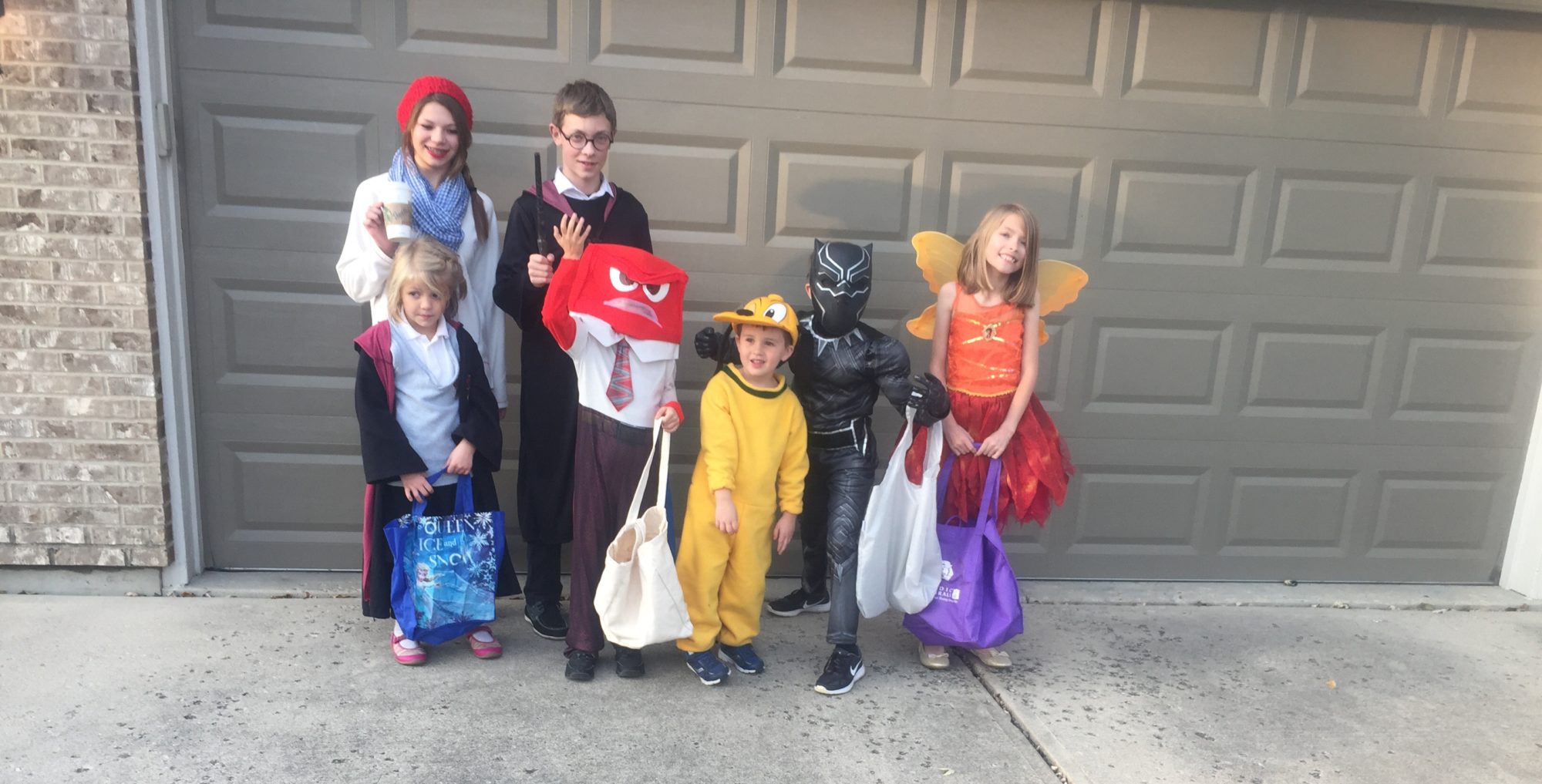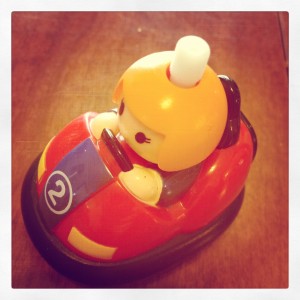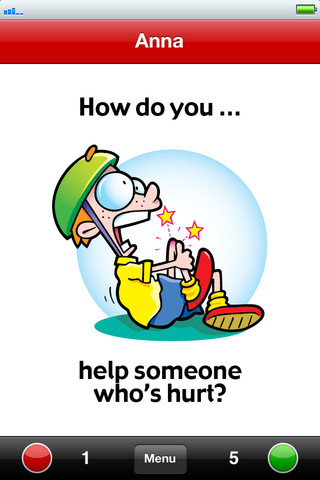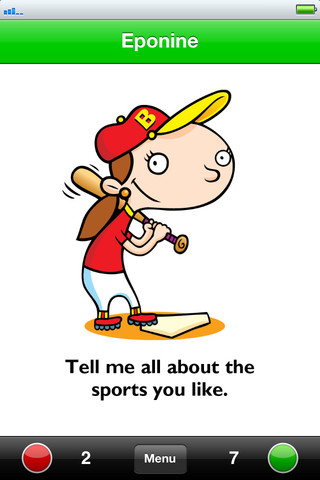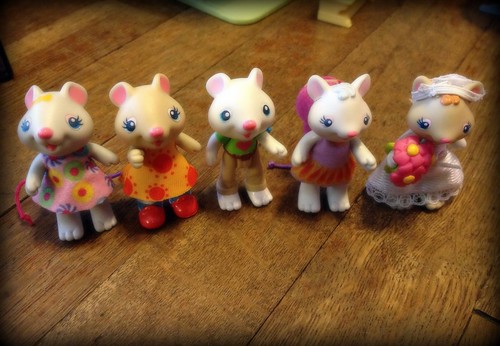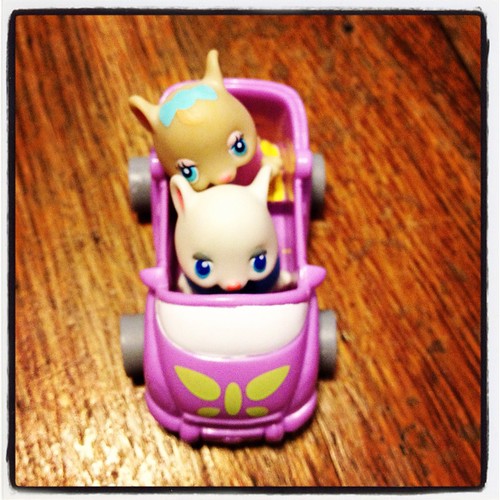Part 1 of this story is here, and part 2 is here.
You’ll want to read them first.
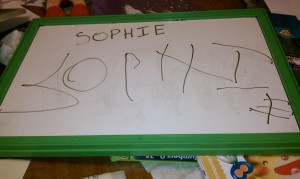
Despite my terrible fear about the scope of Sophie’s delays, I started working with her at home immediately. I really had no idea what I was doing, but at least I was doing something. I googled and started out very basically with speech ideas from Sophie’s SLP and basic cutting, coloring, play-doh, and those type of activities for her hand strength.
About a month after that fateful Tuesday, Sophie was able to start occupational therapy. I had been doing my best with her at home and she had already made progress. But once she got in OT, she made lightning-fast progress in the fine motor skills department. Her speech sessions continued to go well at therapy and at home.
Around the time she started private OT, I was working with her at home one weekend when she actually cut, for the first time by herself (with special scissors), a line about 3 inches long. She cut up a line on construction paper. I burst into tears. LOUD tears. Sophie looked at me like, “What is WRONG with you?” Bobby came into the room. “What’s wrong? What happened?”
“She cut! She cut!” I held up the paper and sobbed. She had done it. She had shown me, that she could learn. That she could learn from me. It was a real turning point for me, an encouragement to keep on working, that she and I could do this together.
The paperwork to get her into the new school – a classroom made up of 1/2 kids with delays and 1/2 “typically developing” – was overwhelming. At one point I lost a medical form and I FLIPPED OUT. I tore the house apart looking for it and I broke down WAILING and sobbing over the form. I scared Sophie to death with that breakdown. Did I mention I was eight months pregnant at the time?
I found the form UNDER my laptop. Then, I cried some more. Tears of relief this time.
The evaluation process to get her qualified for the “special” class was a nightmare. Sophie cried the whole time and would not perform at all. Fortunately, they qualified her based on our testimony and her scores from her speech language pathologist, as well as what observations they were able to make. Sophie and I vistited three schools and picked the one we liked the best. I ended up feeling really good about the teacher.
(And here I must insert proof of God’s faithfulness to my daughter: of those three schools I visited, the other two – the ones I did not choose for Sophie – were closed by the district the next year. Had I chosen one of them, she would have had to switch schools this year. Despite the fact that one of the ill-fated schools was recommended to me over the one I chose, I went with my gut – a gift from God, I believe.)
At the meeting to write her IEP before she started her new school, the supervisor asked us what our goals were for Sophie. I had one primary goal. “I want her to catch up so she can go to a regular kindergarten.” I said. At that time is was November 2010. She would have the rest of that school year, and the whole of the following one, to meet that goal. In my heart, I knew she would.
About seven weeks after that first talk with her original preschool teacher, and two weeks after her fourth birthday, Sophie started preschool at a new school, where her teacher was an intervention specialist and she would receive speech and occupational therapy. So now we had her in private speech and OT, school speech and OT, and “Mommy-Sophie time” work at home 5-7 times a week. Her teacher, for sure, was a definite answer to my prayer that God would put the right people in Sophie’s life to help her through this.
Her progress and response was immediate. She began, as her private occupational therapist put it, “blazing through her goals.”
But still we worked. We worked HARD at home. I was kind of a nazi about working, but I also made it as fun as possible. Books, puzzles, markers, crayons, white boards, putty, cutting books, scissors, board games, took over our dining room. We worked.
And then I had a baby.
And then we worked some more, writing and cutting and playing games while I nursed. I won’t lie, sometimes these work sessions ended with us both in tears. But for the most part, they were fun, and they served to tighten our bond. We were doing something very big, very important, and we were doing it together.
We went to therapy, speech and OT, once a week each. Baby in tow. I tried not to lose my mind. And Sophie started catching up.
It was very, very hard. Having a newborn and helping Sophie with her delays -the constant maintenance of both of those situations nearly killed me. But I had my eyes on the prize. It wasn’t easy. It’s not a time I look back on with really warm memories. I definitely don’t want to do it again. But it was very, very worth it.
In January, Sophie’s therapy clinic abruptly closed (as in, with no notice whatsoever.) This meant we would lose her therapists, Tanya and Paula, who she loved. I was completely devastated. But God was faithful. He brought us a new speech language pathologist, Kristen, who was such an amazing blessing. And Sophie was able to start with her within just two weeks or so. She had to wait much longer to get into OT, but with our work at home and her OT at school, that turned out all right. Once she did get in, her new OT, Christy, was also just wonderful.
If you are a regular reader of this blog, you know the rest of the story. If you aren’t, let me shout it from the rooftops with JOY: My beautiful, funny, smart, talented daughter completely caught up – and then some – in only 18 months of therapy rather than 3-4 years. She has been dismissed from special ed, no longer requires an IEP, reads at a 1st-grade level, and recognizes sight words on a 4th-grade level. Today is her last day of preschool. She will start a “regular” kindergarten in the fall. On her kindergarten-readiness evaluation, her teacher wrote, “Sophie is a leader in the classroom, she loves helping out everyone and enjoys above grade-level challenging work.”
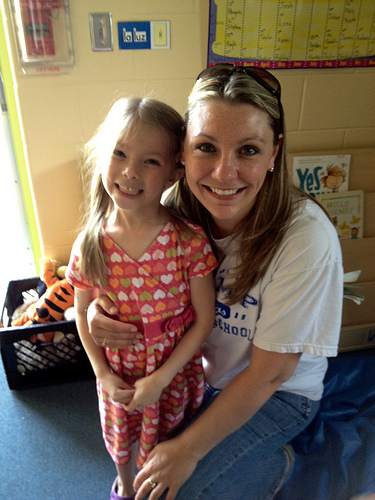
So we have a happy ending, and I am beyond thankful. I cannot truly express how thankful I am. And I am SO PROUD of my hard-working girl! I hope our story can be an encouragement to others. Though it is hard to think back to that fall of 2010, I do so with a grateful heart. As hard as it was, it has been made equally good.
But seriously. Did I already say this? I DO NOT want to do that again. And I hope you never have to. But if you do, let’s talk. You are not alone, and you can help your child.
